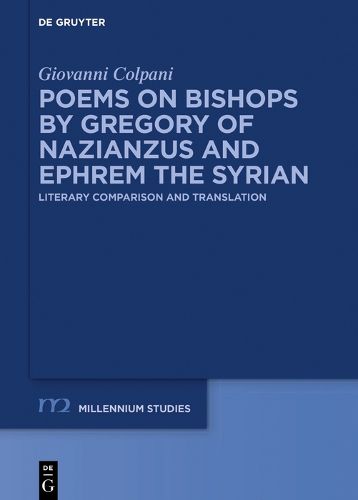Readings Newsletter
Become a Readings Member to make your shopping experience even easier.
Sign in or sign up for free!
You’re not far away from qualifying for FREE standard shipping within Australia
You’ve qualified for FREE standard shipping within Australia
The cart is loading…






Gregory of Nazianzus and Ephrem the Syrian are both regarded as foundational poets for their respective literary traditions. They wrote in the same period, the 4th Century, and they both devoted a cycle of poems to a debated theme of the time: bishops.
Aim of this work is enhancing the appreciation of these cycles (Gregory's carmina II, 1, 10; 12; 13; 17 and Ephrem's carmina nisibena 13-21) as works of literature embedded in the performance and reading practices of the time, in theological debates on the episcopal office and in their respective communities. The book compares performance and transimission methods of the two corpora, the word choice and imagery describing the episcopal office and how portraits of real-life bishops are influenced by theological expectations on what a bishop should be. Two chapters are devoted to literary phenomena peculiar to each author.
This book, the first extensive comparison of these two authors from a literary point of view, will interest scholars of Late Antique poetry and literature, Church history and Patristic theology. A new English translation of both corporas constitutes the appendix.
$9.00 standard shipping within Australia
FREE standard shipping within Australia for orders over $100.00
Express & International shipping calculated at checkout
Gregory of Nazianzus and Ephrem the Syrian are both regarded as foundational poets for their respective literary traditions. They wrote in the same period, the 4th Century, and they both devoted a cycle of poems to a debated theme of the time: bishops.
Aim of this work is enhancing the appreciation of these cycles (Gregory's carmina II, 1, 10; 12; 13; 17 and Ephrem's carmina nisibena 13-21) as works of literature embedded in the performance and reading practices of the time, in theological debates on the episcopal office and in their respective communities. The book compares performance and transimission methods of the two corpora, the word choice and imagery describing the episcopal office and how portraits of real-life bishops are influenced by theological expectations on what a bishop should be. Two chapters are devoted to literary phenomena peculiar to each author.
This book, the first extensive comparison of these two authors from a literary point of view, will interest scholars of Late Antique poetry and literature, Church history and Patristic theology. A new English translation of both corporas constitutes the appendix.